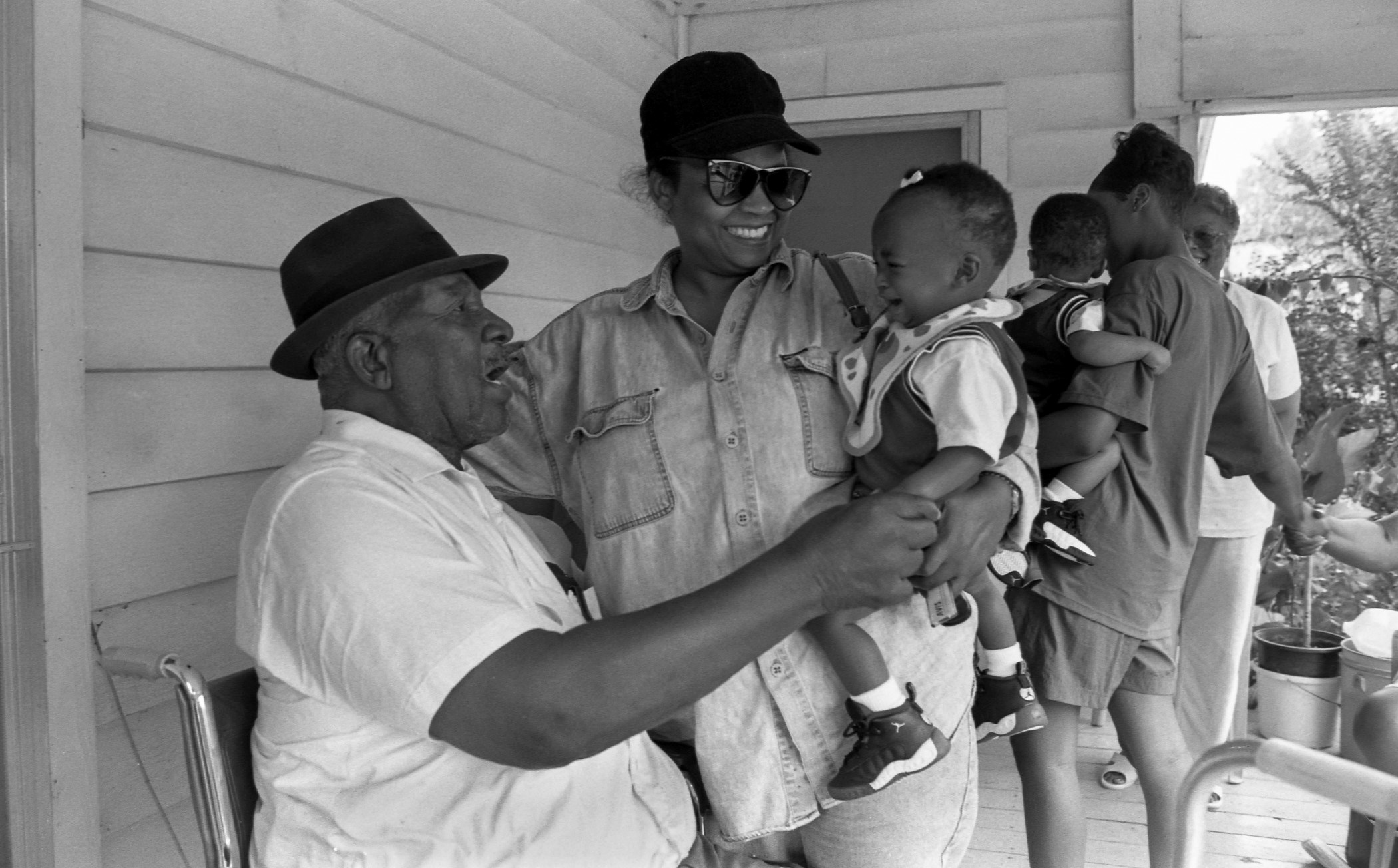
What: The Upshaws of County Line, an exhibition of photographs taken by Richard Orton of a family that lived in an East Texas community that was formed in the 1870s as a safe place for newly freed slaves during Reconstruction and Jim Crow Texas.
When: July 7 (Friday) – Aug. 12 (Saturday). A reception, which will include an artist’s talk, will take place from 7 to 9 p.m. Aug. 4 (Friday).
Hours: 9 a.m. - noon and 1 - 5 p.m. Monday - Friday, with extended hours until 8 p.m. on Thursdays and Fridays and 11 a.m. - 3 p.m. Saturdays.
Where: UNT on the Square, 109 N. Elm St., on Denton's historic courthouse square.
Cost: Free.
More information: Call 940-369-8257 or find more information, including directions, at UNT on the Square online.
DENTON (UNT), Texas -- The exhibition The Upshaws of County Line follows one family from everyday events, such as a game of dominos, to important milestones such as births and funerals.
But what makes the Upshaws unique is where they lived — County Line, a freedom colony in East Texas formed in the 1870s by newly freed slaves on land that they owned.
The photographs, taken by University of North Texas alumnus Richard Orton, will be on display from July 7 (Friday) – Aug. 12 (Saturday) at UNT on the Square. A reception, which will include an artist’s talk, will take place from 7 to 9 p.m. Aug. 4 (Friday).
The exhibition, which covers 25 years, is based on his 2014 book of the same name published by UNT Press.
“I watched family members being born and grow up,” he said. “I watched people die. I took photographs of funerals. It was a very rare gift that I was able to do what I did there.”
Orton was a music major at UNT who took up photography while living in Austin after college. During a visit to his parents’ home in Nacogdoches, he discovered the existence of freedom colonies and became curious about the impact that their relative autonomy had on their families.
He found the Upshaw family, which had 13 children, and told them he was interested in photographing them. The family agreed, and he began taking the documentary-style, black-and-white photographs the day after Thanksgiving in 1988.
In one memorable photo, the patriarch Edward Monel Upshaw is being introduced to his great-granddaughter, Reya, less than a year old, who is crying. Other photos include the annual homecoming celebration that brings in family members from all over the country in August.
“What I hope that it does is convey some sense of what it was like to be raised in a community like that,” Orton said. “The children were not subject to all the negative aspects of the Jim Crow reality of the day. By virtue of fact they owned their own land, they automatically had their own independence.”




